String of Pearls Plant - Learn How to Care for Senecio Rowleyanus
String of pearls is a very characteristic plant - mostly because of its looks. As the name suggests, it resembles pearls on a string, which makes the plant distinct against other species. But senecio rowleyanus is definitely not the best idea for beginner plant lovers. It's a delicate and difficult to grow plant. Even the smallest mistake in everyday care might bear unfavourable consequences for it. What should you know about string of beads, and what does this plant needs? Let's find out!
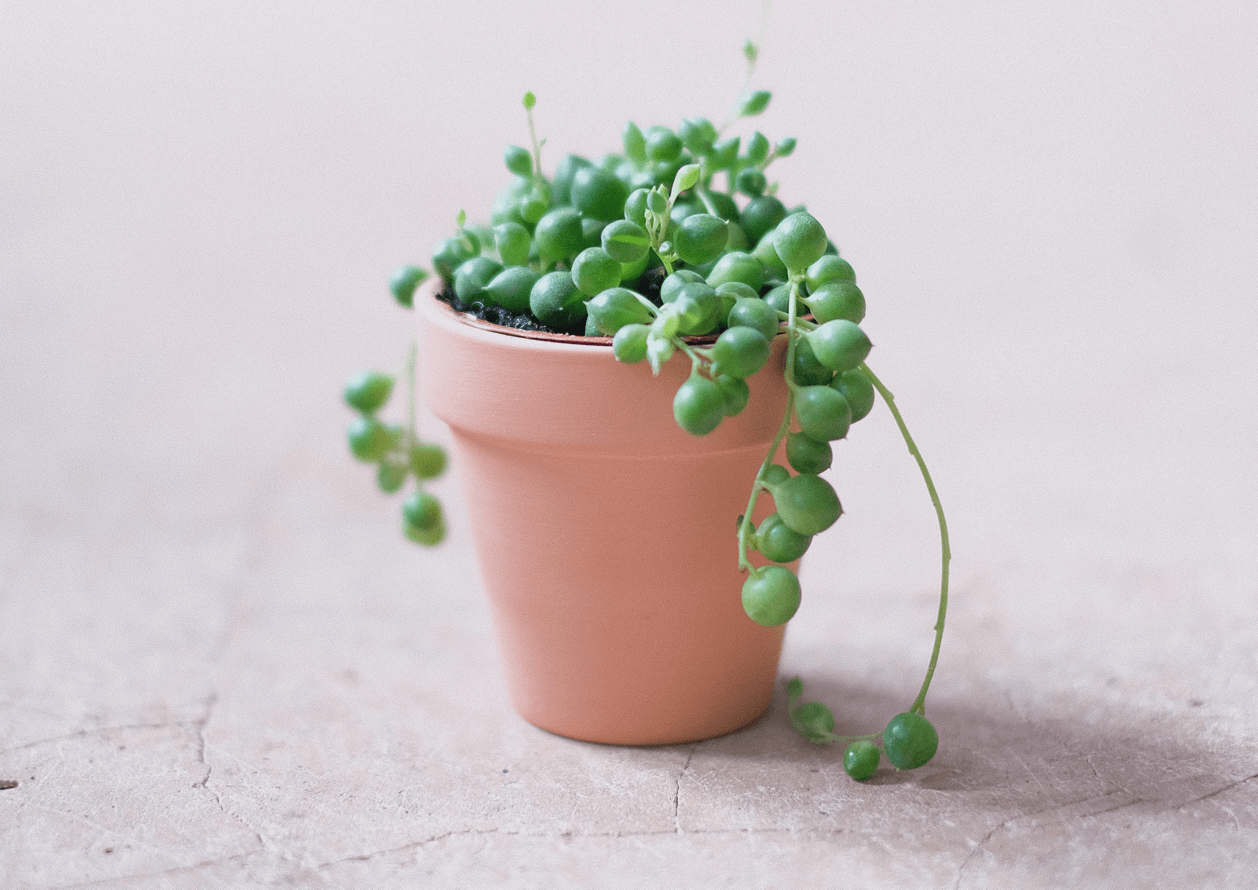
What is string of pearls plant?
Senecio rowleyanus is a succulent known by many names, e.g. string of pearls or string of beads. Some people remember what kind of plant it is when they learn it literally looks like a string of pearls - it’s its characteristic feature.
The looks of string of pearls plant is not a coincidence. The small balls called pearls accumulate water. That’s why the plant can survive a drought for a long time. As it ages, the strings become longer. After years, some of them might reach even up to 100 cm. Such specimens look truly impressive.
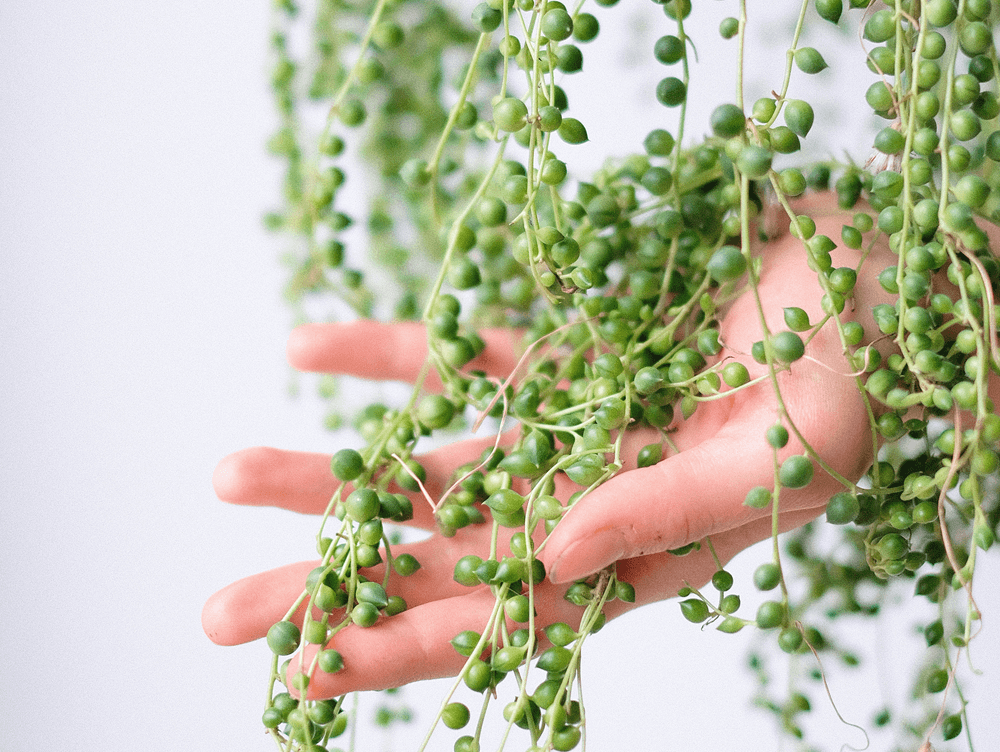
String of pearls care - what are the best conditions for it?
Senecio rowleyanus is quite a demanding plant, so it’s not suitable for beginner plant enthusiasts - unless they are very diligent. Keep in mind that the plant needs a different type of care in summer, which changes in winter, when it hibernates.
Make sure the string of beads is kept in the right temperature in summer. It shouldn’t be lower than 20-21°C (68-70°F). But the plant doesn’t like temperatures over 24°C (75°F) either. Watering is another important aspect of string of pearls care - do it sparingly. Senecio rowleyanus likes barely damp, or even slightly dry soil.
What about winter? We recommend moving the plant to an unused room in the house. A pantry, a mudroom, or even a staircase are good options. What’s important, the temperature cannot exceed 16-17°C (61-62°F). It cannot be too low, either - 11°C (52°F) is the minimal acceptable value.
How string of pearls reacts to overwatering
Senecio rowleyanus is sensitive to excessive water in the soil. It’s a result of the fact that it accumulates water - which has already been mentioned. It means that if it gets even more of it into the soil, it starts revolting. Roots might rot in short time, and it’s irreversible.
Those who haven’t a good hand for watering yet and are anxious that they might accidentally overwater their string of pearls plant, might try an easier method - sprinkling. You can find a simple spray bottle in a gardening shop or in a household items store. Just pour some cold water to it and spray the plant every few days - this way, you can be sure it’s safe.
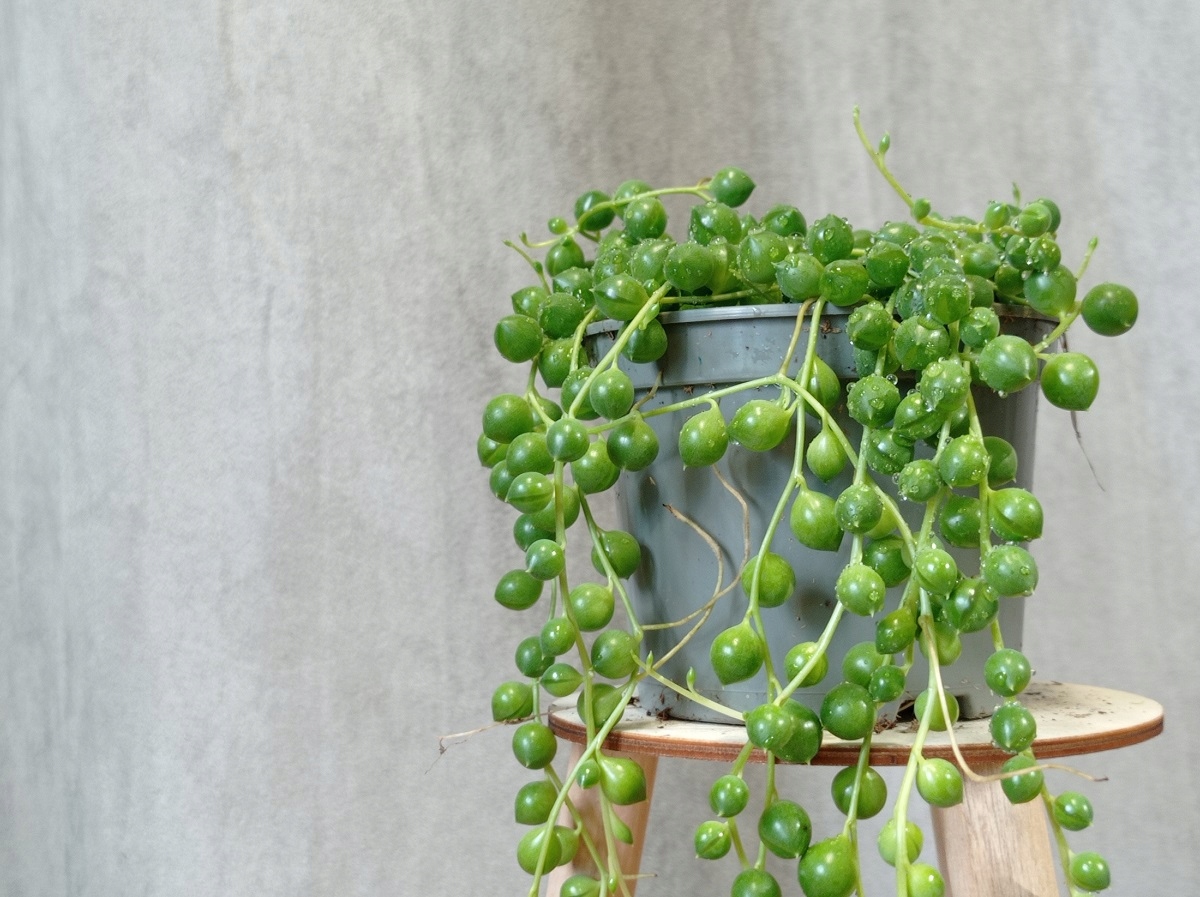
String of pears plant - what is the best soil for it?
String of beads likes standard succulent mixes. Make sure the soil is permeable - you can mix it with the following elements:
- gravel,
- coarse sand,
- pumice,
- gravelite,
- perlite,
- composted bark.
When you notice any signs of vegetation, which typically happens at the end of summer, you have to fertilize the soil. You can find various mixes for succulents in a gardening center - they are perfect for this purpose.
Can you repot a string of pearls plant?
Repotting the plant might evoke some anxiety, as it’s very fragile. But keep in mind it’s absolutely necessary - especially if your bead plant was purchased in a flower shop and its pot is tight.
Nonetheless, be extra careful when repotting a Senecio rowleyanus. The plant has many small roots, and they are easy to damage. Interestingly enough, if you take a good care of your string of beads, it will grow quickly. It means you might have to repot it every 2 years, so the roots have enough space in the container.
String of pearls propagation - is it difficult?
There are two ways to propagate a senecio rowleyanus plant. The first one involves using the plant’s branch. One has to cut it off and then root it in a pot.
Another method uses seeds. In this case, you have to put at least several of them in one pot. This way, you increase the chances that one of them takes root.
Just like with the mature plant, don’t overwater the seedlings, otherwise they won’t grow. You can use the mentioned spray bottle and water the plant every few days.
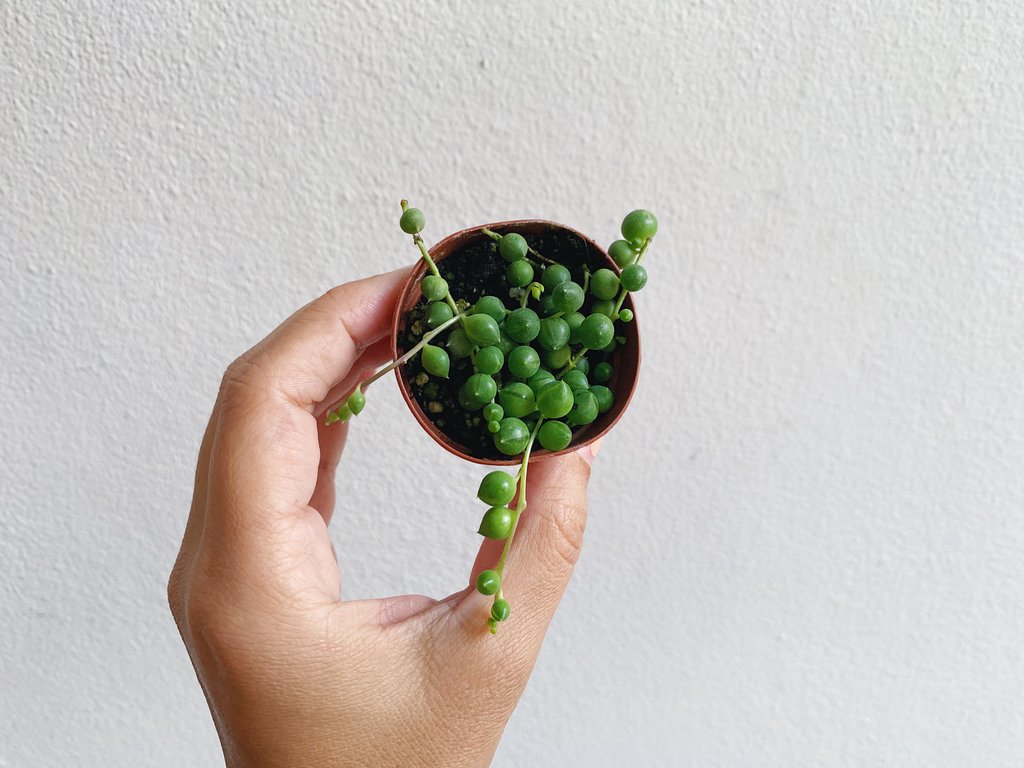
String of pearls - diseases and pests
Although string of beads is quite a demanding houseplant when it comes to care and propagation, it’s also resistant to diseases. In fact, excessive watering is the biggest threat for it. In rare cases, one might also notice botrytis on leaves - it might result from overwatering as well, but that’s not the only reason. It might appear if a senecio rowleyanus is kept in a low temperature.
The bead plant is less resistant to various pests. Aphids are quite dangerous to it. Fortunately, these insects are easy to spot - make sure to take the necessary measures as soon as you notice them.
There are other pests that might be the reason why a string of pearls is dying. For instance:
- powdery mildew,
- spider mites.
If you follow the general care rules, the risk that these insects attack your plant is low. Their appearance is classified as sporadic.
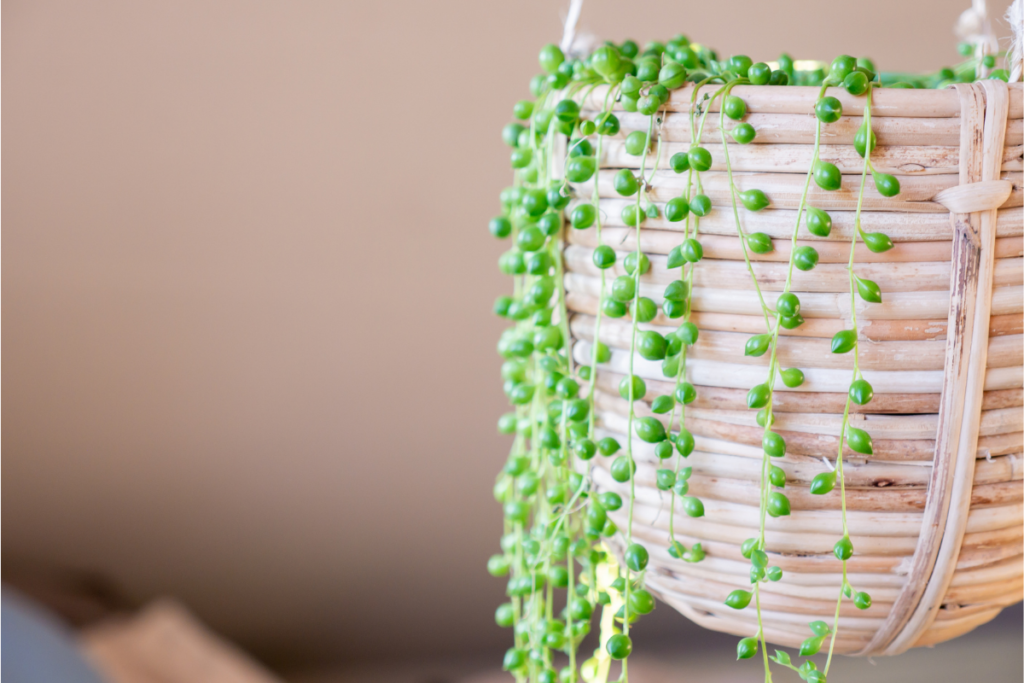
📍 Where to find a string of pearls for sale?
Senecio rowleyanus is quite a popular plant, so you can buy it in many places such as flower shops, plant nurseries and even supermarkets. When picking a plant, pay attention to the state of the string of pearls. If you notice something troubling, it's better to find another store.
📍 How to take care of a string of pearls plant?
String of beads needs careful attention, as it a very fragile plant. Sparse watering is the most important part. The temperature of the room and the quality of soil (it should be permeable) are significant as well.
📍 How fast does a pearl plant grow?
A string of beads grows really fast in good conditions and with a proper care. It might need repotting even every 2-3 years. The longest strings of a pearl plant might reach up to 100 cm.
📍 How to propagate a string of pearls plant?
You can propagate your bead plant in two ways. The most common way is taking a branch from an adult plant and rooting it in a separate container. Another method involves growing a string of beads from seeds.
Featured articles




